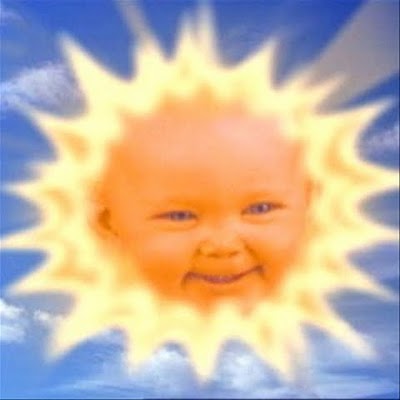
Posted on 10/29/2022 9:47:57 PM PDT by BenLurkin
NASA's Solar Dynamics Observatory (SDO) this week captured an image of the sun in ultraviolet light featuring three dark patches that look like a smiling face — a face that could signal a solar storm with problems for Earth.
The National Oceanic and Atmospheric Administration's Space Weather Prediction Center issued a minor geomagnetic storm watch effective for Saturday. While geomagnetic storms can create beautiful aurora in the sky, they can also disrupt GPS and create harmful currents in the power grid and pipelines.
The dark patches, known as coronal holes, are regions where solar wind escapes more quickly and readily into space, making these regions cooler. These winds can clock up to 1.8 million miles per hour, according to Exploratorium, a museum in San Francisco.

People capitalized on the opportunity to make memes and alterations of the smiling sun to look like a jack-o'-lantern or the Stay-Puft Marshmallow Man from the Ghostbusters franchise.
NASA took photos of the sun back in 2014 that also resembled a jack-o'-lantern, titling the photos "Pumpkin Sun." The regions that made up the jack-o'-lantern's face were active regions of the sun, marking disturbances in the magnetic field that produce solar storms like solar flares and coronal mass ejections.

Active regions on the sun gave it the appearance of a jack-o'-lantern. This image is a blend of 171 and 193 angstrom light as captured by the Solar Dynamics Observatory on Oct. 8, 2014.
NASA/GSFC/SDO
Because the human eye cannot perceive certain wavelengths of the sunlight, solar physicists use telescopes that can image the sun in the extreme ultraviolet spectrum. SDO uses 13 different wavelengths of light to highlight a particular part of the sun's atmosphere.
"Ultraviolet light from the sun can show us the origins of solar storms that can lead to power outages, cell phone disruptions, and delays in shipping packages due to the rerouting of planes from over the pole," Joseph Gurman, a scientist at the Solar Data Analysis Center at NASA Goddard Space Flight Center, told NASA.
Wednesday's image was taken at 193 angstrom light, giving it the yellow, light orange hue. The 2014 image was taken at a blend of 171 and 193 angstrom light, colorizing the sun in gold and yellow "to create a Halloween-like appearance," according to NASA.
Both images were captured in October in time for the Halloween season.

Don’t Let the Sun Catch You Crying
Rickie Lee jones
You tube
It seems like every couple of weeks they forecast a solar storm with potential problems for earth that could cause issues and bad things but they haven’t been able to come back afterwards and say yup the internet went down because of a solar storm that fried the Direct TV and some weather satellites.

Then they're like:

Mon Dieu! It’s Fettergoon!
Nah, the guys who wrote it, “Gerry and the Pacemakers,” 1964.
Earlier thread
https://freerepublic.com/focus/f-chat/4104297/posts
Hitler mustache?
Disclaimer: Opinions posted on Free Republic are those of the individual posters and do not necessarily represent the opinion of Free Republic or its management. All materials posted herein are protected by copyright law and the exemption for fair use of copyrighted works.